Crafting copy that converts website visitors into leads and customers is an art that takes insight and iteration. Even if your website looks sleek and loads fast, poor copywriting can hamper conversion rates.
By understanding the reasons your website copy isn’t converting and making strategic improvements, you can connect with more of your target audience and achieve your business goals.
This article will explore seven key reasons your website copy might not be converting along with tips to boost conversions.
Reasons Your Website Copy Isn’t Converting
Website Traffic Mismatch
One possibility for poor conversion rates is a mismatch between your expected audience and actual website visitors. For example, if you sell software tailored to small businesses, but most of your traffic comes from enterprise companies that won’t have a use for it, they likely won’t convert.
Carefully analyze your traffic sources and on-page analytics to build visitor profiles. If more than 50% of visitors don’t match your ideal customer, your targeting needs adjustment across channels.
Wrong Audience Targeting
Along with analyzing existing traffic, examine how you are attracting visitors in the first place. If you use broad targeting parameters in search engine optimization and pay-per-click advertising, you may be driving the wrong people to your site.
Narrow down both demographic and intent qualifiers to reach those most likely to buy your offering. Refine over time until at least 60% of traffic matches your target customer profile and interests.
Slow Website Speed
With the average attention span hovering around 8 seconds, slow page load times lead many visitors to abandon sites. If your website takes more than 2-3 seconds to load, conversion rates plummet.
Use speed testing tools like Google PageSpeed or Pingdom to find issues hampering performance. Compress images, minimize HTTP requests, upgrade servers and cache static content to improve speed. Faster sites enjoy higher visitor engagement.
Visual Clutter
While imagery can enhance messages when used judiciously, visual clutter often distracts more than it helps conversions. If key pages feature auto-playing video, pop-ups, and animations alongside copy, readers struggle to concentrate.
Simplify layouts and remove unnecessary visual elements to spotlight must-read content. White space and an uncluttered interface also convey quality and professionalism.
Unclear Message
Copy that fails to quickly communicate what a business does or how it can help visitors struggle to convert window-shoppers into buyers.
Avoid generic claims that could apply to any company in your industry in favor of specific explanations of differentiated value. Clearly spotlight unique strengths and irreplaceable benefits backed by evidence over the first 2-3 sentences visitors read.
Lack of Social Proof
Today’s consumers rely heavily on social proof like online reviews and testimonials when evaluating brands. Yet, many businesses hide this invaluable conversion asset where few visitors notice it.
Display authentic customer endorsements, ratings, case studies and expert media mentions prominently across key landing pages. Back claims with specific data points and converts increase.
Losing to Competition
Failing to regularly analyze competitors’ sites can also limit conversion optimization success. Their continually evolving copy likely already incorporates many of the above principles tailoring messaging precisely to shared target audiences.
Note effective explanations, testimonial usage and calls to action stealing your potential customers and integrate similar best practices that align with your brand story.
How to Improve Your Website’s Conversion Rate
Have a Clear Call to Action
Calls-to-action serve as clickable guideposts at key decision points, gently nudging visitors to take intended actions like downloading an ebook, scheduling a demo or making a purchase. To work, they must use clear, benefit-focused action verbs aligned with target audience priorities.
Test prominence, design, copy and placement of CTAs on key pages through A/B testing until you find what best motivates your potential customers.
Know Your Audience
While understanding current website visitors provides a baseline, conversions improve exponentially when you intimately grasp your target audience’s hopes, challenges, values and questions surrounding topics your brand intersects.
User interviews, surveys, support ticket and sales call analysis along with social listening offer holistic insights you can leverage to craft resonating messages and solutions.
Edit and Proofread Your Copy
Persuasive writing that activates conversions contains no typos or grammatical errors which damage brand credibility. Invest in professional editing and proofreading services to polish copy. Then continuously optimize page content based on key performance indicators like time on page, bounce rates and visitor flow between pages.
Using advanced AI services like popai.pro for writing and proofreading can save time and improve copy quality. Rather than relying solely on manual editing, PopAi’s ai writer reviews drafts in seconds to catch errors a human might miss while optimizing vocabulary and flow.
Implement SEO, CRO and Paid Media Strategies
Combining conversion rate optimization fundamentals with advanced technical marketing techniques packs the most persuasive punch.
Sync emotive copy with SEO targeting tactics like metadata optimization, schema markup, internal linking and quality backlinks. Pour testing insights into paid channels. Unifying strategy across channels creates synergies compounding conversions.
Conclusion
In today’s crowded digital landscape, small copywriting mistakes push potential customers into competitors’ hands. A data-driven approach to crafting resonating copy tailored to clearly defined target audiences drives conversions while building loyalty and referrals.
Focus on eliminating common pitfalls like speed delays and distraction while spotlighting differentiation. Testing and refinement never end as market needs continually evolve, but the payoff in conversions makes it one of the wisest investments any business can make.






